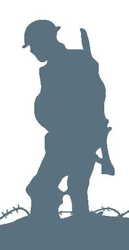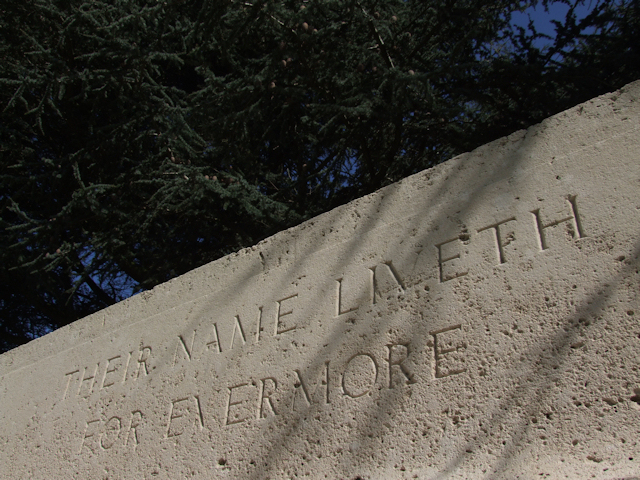Biography
Walter was born on 27th December 1889 at Leverstock Green and was baptised at Leverstock Green on 9 February 1890. He was one of ten children born to Edward and Emma Mead, but three had died in childhood.
In 1891 the Census recorded that the family lived at Westwick Row, Leverstock Green. Edward worked as a Furnace Stoker and his mother was a Straw Hat Maker. By the time of the 1901 Census Edward was recorded at Home Park Paper Mills and was recorded as living on his own and working at the Paper Mill - perhaps just keeping the furnaces burning overnight, rather that separated from Emma? Emma was recorded at 2 Railway Terrace, Abbots Langley with six of the children, including Walter.
In 1911 they were recorded as together at Railway Terrace where his father was a Stoker in the Paper Mill and Walter was a Clerk in the Paper Mill.
Walter married Annie Jacobs at Hemel Hempstead on 20th January 1911. OR He married Annie Tarbox in 1912 in Hemel Hempstead and they had a daughter Olive on 31 August 1916.
According to military records, Walter had apparently tried twice to enlist but was rejected as he always suffered from "catarrh on his chest". He was successful on the third occasion, when on 6th December 1915 Walter undertook a Medical Examination at Hemel Hempstead. It was recorded that the top finger of his right hand was missing, however five days later on 11th December he attested to the Northampton Regiment. At the time he gave his address at 81 Wood Lane End, Hemel Hempstead and his occupation as a Warehouseman. He was posted to the Army Reserve, and sent home. He was mobilised on 10th April 1916, and was posted as a Gunner to the Royal Field Artillery (RFA). On 20th May 1916 he was posted to the 3rd Battalion of the Northampton Regiment as an infantryman.
A daughter, Olive Irene was born at Hemel Hempstead on 31st August 1916.
Walter remained in England until 3rd October 1916 when he embarked at Folkestone and disembarked at Boulogne later that same day. On arrival he was posted to the 1st Suffolk’s, and later in the month, on 18th October, he transferred to the 7th Suffolk’s (Reg. No. 40702), joining the battalion the next day.
Walter had only been in France a short time when he was admitted to the 56th Field Ambulance and was diagnosed suffering from Tuberculosis on 15th November 1916 having been spitting blood and having night sweats, and later that day was transferred to 41 Casualty Clearing Station. On 24th November he returned to England on the Hospital Ship “Cumbria” and arrived back in England the next day and was transported to the 5th Northern General Hospital at Leicester, where he stayed until 1st March 1917, suffering from bronchitis.
A Medical Report dated 20th February 1917, identified that the origin of Walter’s disability had been in 1906. He had been diagnosed at Hemel Hempstead and had been subject to catarrh all his life. The Report continued to explain that Walter had joined the Army because he thought that the open life would do his chest good. He had been suffering ever since. He had reported sick, spitting blood, for the first time on 4th November 1916, and had been in hospital ever since. We know that he had been rejected for service twice rejected when trying to enlist and was accepted at the third attempt, and his condition was now about the same as before enlisting. The Report concluded that the condition was long-standing, and not due to or aggravated by his Active Service. He was found very short of breath and unfit for much physical exertion, and it was recommended that he be discharged immediately with a permanent disability. Walter Mead was Discharged No Longer Physically Fit for War Service on 21st March 1917. He was awarded Silver War Badge No. 153,318. The cause of discharge was listed as Bronchitis. Reg. No. 40702 Suffolk Regiment.
The Abbots Langley Parish Magazine Roll of Honour first recorded Walter in December 1916, serving with the 7th Suffolk’s, and in September 1917 reported that he had been discharged disabled.
Walter Mead survived the War, as did his brothers Arthur and Albert. Albert was taken Prisoner of War on 22 March 1918 at Epehy, near St Quentin in France. His sister Daisy, married George Windmill. George and his brother Joseph Windmill served in and survived the Great War. Albert’s third brother-in-law, John Windmill, died as a result of wounds in September 1920.
On the 1939 Register he was living at 10 Paradise, Hemel Hempstead with his wife, and his occupation is given as Bus Conductor.



